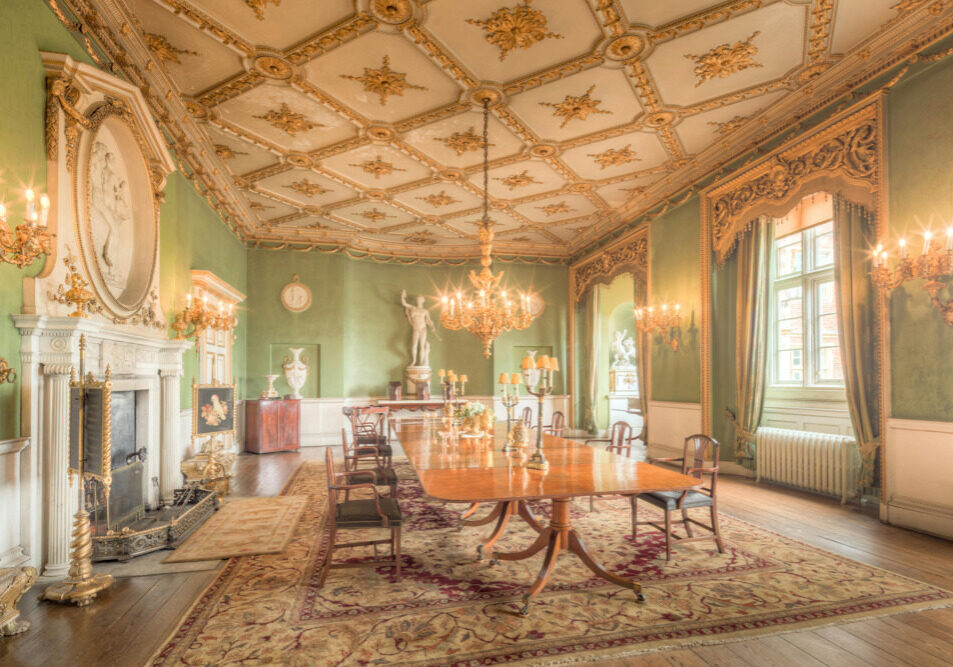How Can Heritage Buildings Be Futureproofed Without Impacting Their Character?

The UK has a rich architectural history reflected in our diverse range of heritage buildings.
But with an estimated 350,000 listed homes and the oldest housing stock in Europe, our buildings pose particular problems when trying to retrofit them with the latest energy efficiency measures.
The very features that make them unique such as their windows and chimneys can also cause the most headaches for their custodians.
However, there some fairly simple measures that keep a careful balance between sustainability and preserving their character.
Windows To History
Depending on listed status, it can be tempting to rip out windows and replace them with new double-glazed windows.
Yet windows are often the main feature of a heritage building so to save on landfill, it may be possible to repair them and have them fitted with double glazing and then keep them well maintained.
Heritage double glazed windows need to be very thin to maintain the character of the building and are usually six to 11 mm, either vacuum sealed or filled with krypton gas.
Insulation In All The Right Places
Many heritage properties have numerous chimneys which can be blocked to stop heat escaping or insulated without impacting on their character.
Other areas to target are lofts, external walls and between floors if listed status allows it and no historic features are impacted, according to Heritage England’s advice.
External Blinds Protect Historical Items And Occupants From The Heat
As our climate heats up, heatwaves and hotter temperatures are becoming more common, often causing buildings to become uncomfortably hot, especially in south-facing rooms.
As a result, more and more heritage properties are now installing external blinds to keep the sun’s harmful rains from overheating rooms and to protect furniture and valuable historical items from sun damage.
They can reduce the temperature inside a room by five degrees which can make the difference between stifling and comfortable for occupants and visitors. Best of all, they are motorised, allowing you to remotely control how much sunlight comes into rooms throughout the day and the seasons.
Most of the time external blinds are fitted into the window reveals so they are very unobtrusive and have very little, if any, impact on the look of the building from the outside or inside.
And there is no need to worry about visitors or occupants not being able to enjoy the view outside because our special fabric allows people to still see what’s going on outside while blocking the sun’s harmful rays.
Tailored To Your Needs
We are very passionate about preserving our wonderful history and have great deal of experience fitting external blinds to heritage buildings and for restoration projects.
We design our external blinds to tailor your exact needs for futureproofing and have a full range of classic styles and finishes to choose from.
Our experts are very happy to speak to you and advise you on the best options, so please don’t hesitate to get in touch. We also offer a high quality range of internal and commercial blinds.
Renewables Need A Discreet Location
Renewable systems like wind and solar power may be permitted under listed status as long as they are fitted to out-buildings away from the main heritage buildings and don’t impact on the character of the building.
In the same way, heat pumps are increasingly being installed in historic properties though doing so must have the appropriate permissions and must not alter the building’s appearance.
Where Can I Find More Help Including Grants?
Historic England provides extensive advice on futureproofing heritage buildings in Adapting Historic Buildings for Energy and Carbon Efficiency report. It also provides plenty of advice in Energy Efficiency and Retrofit in Historic Buildings.
There are also grants and funding available. A great place to look for grants and funding available is The Heritage Funding Directory which will include funding like the government’s always open Repair Grants for Heritage at Risk and the National Lottery’s Heritage Fund.



